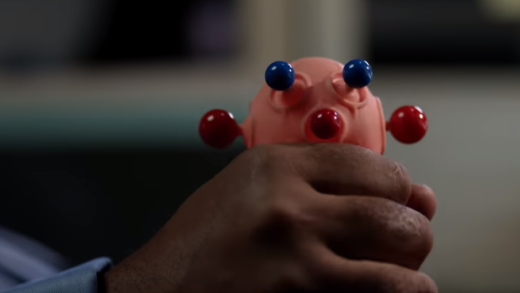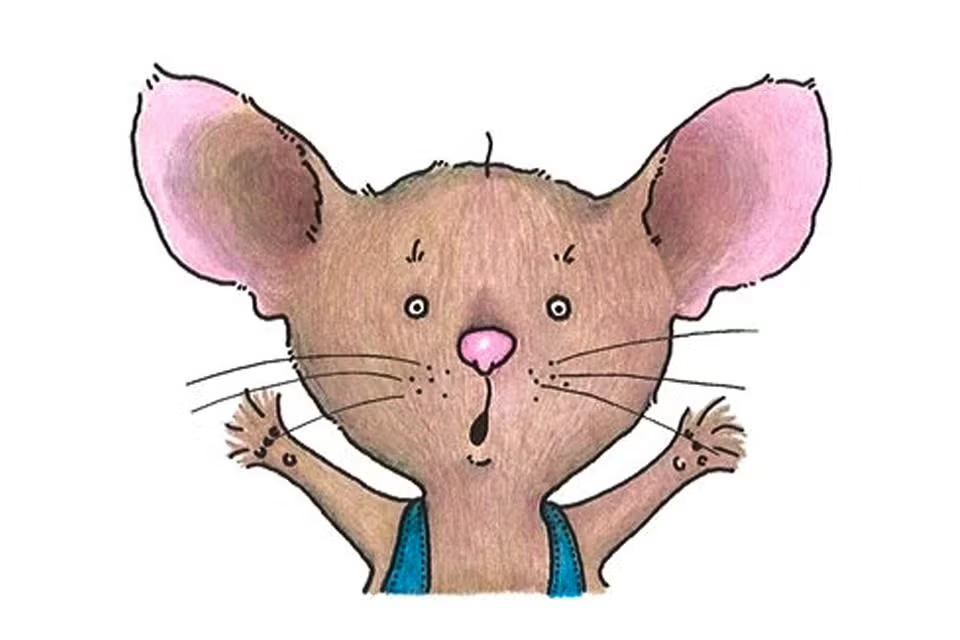Date: Nov 6, 2025 (Thursday)
Location: Convene 360 Madison, New York
Start Time: 9:00am (8:00am for coffee)
Ability is what you’re capable of doing. Motivation determines what you do. Attitude determines how well you do it.
-Raymond Chandler
Interior bedroom. Alarm blares at 5:50am. A small, King Queen Charles Cavalier rises from the covers, and behaves as well as any anti-snooze button.
A 1 out of 5 on the guard dog scale; a 2 out of 5 on the watch dog scale — ChatGPT doesn’t know shit.
I peel off my mask of dog saliva, dry heave several times in the sink, bird bath, dress, and grab my backpack full of well-intentioned promises. Promises to address slacks, update Monday boards, and answer work emails. Promises I’d break by the time I reached the station.
My uber arrives and the driver monotonously delivers his MadLib greeting — my name the only differentiator. His GPS reminds me to buckle up for safety and says so with more humanity than the driver.
At the station, I arrive with 6 minutes to spare. I order two mochas: 1 hot, 1 iced. I down the iced in a heartbeat. Then pour the hot over the iced, take a few sips, then pour it all back into the hot container. The hot cup’s cooled and better sealed than its iced counterpart; I toss the plastic.

The train arrives, I board.
I edit a video about Search Intent. I text my boss to “break a leg” — an old theatre superstition prefers “break a leg” to “good luck.” I don’t believe in superstitions, but I don’t know who does, so I play the odds and abide by the rules. I order breakfast to be delivered for my family back home. I book a sitter for December, then ask 3 more if any can relieve the designer for 2 hours today. Two say no; one says nothing at all.
I arrive at Grand Central 3 minutes early. It’s 8:07am.
I head to Convene 360 Madison.
Security is tight. 3 concierges that double as security usher me to the right to check-in. They shout to form 2 lines; a concept lost on the herd. I show my ticket. They demand ID. They tell me to take the elevator to floor 4. 2 more security guards — doubling as stanchions — guide me behind the herd. Before our elevator arrives, a third security guard asks me where I’m going, I tell ’em, “MozCon,” he tells me, “You want floor 4.” I know this, but nod as though its’ the first time I’m hearing it. I follow the herd.
We cram inside the elevator and I wonder if they weighed us before packing us inside — maybe that’s why they wanted my ID, see how many pounds I weighed when last I lied on my renewal form. Floor 4 is highlighted, but so is Floor 8, I can tell it’s the guy in the back most corner. The doors close. A man takes on the role of “resident advisor” and breaks the ice; asks if we’re all from out of town; if we’re all heading to MozCon — notably his back is to the corner most guy, I wonder if he put that together as well. They politely smile and nod and the ice-breaker tells them he flew all the way from Seattle for this and it was hell. There’s genuine laughter and we exit, except the corner most guy. I wonder if Mr. 8 is looking up MozCon when he gets to his floor. It’s what I would do because I have done it and continue to. A marketer “minding their own business” is the fastest way to not have a business.
Up ahead, there’s a restroom and coat check counter. Someone’s already checking their coat. I consider it, but I perpetually run cold and nothing’s worse for my posture than being cold and I’m determined to sit upright today. To the right is a U-shaped Moz booth with t-shirts, and iPads. I get in line. A woman asks my name. I tell her. She promises me a badge. Another person delivers on that promise. My nametag comes lowercased whereas everyone else is titlecase. I assume this is how I typed it in and try to think back on the mindset I was in when I typed it in August; “typed” not knowing it’d be printed. I remember the UX to claim my ticket. I remember wanting to have “a word” with the Moz team about it.

I try to convince myself I don’t have a problem with a lower-case “D”; that it feels more symmetrical to the “k” at the end. I remind myself this is not worth thinking about.
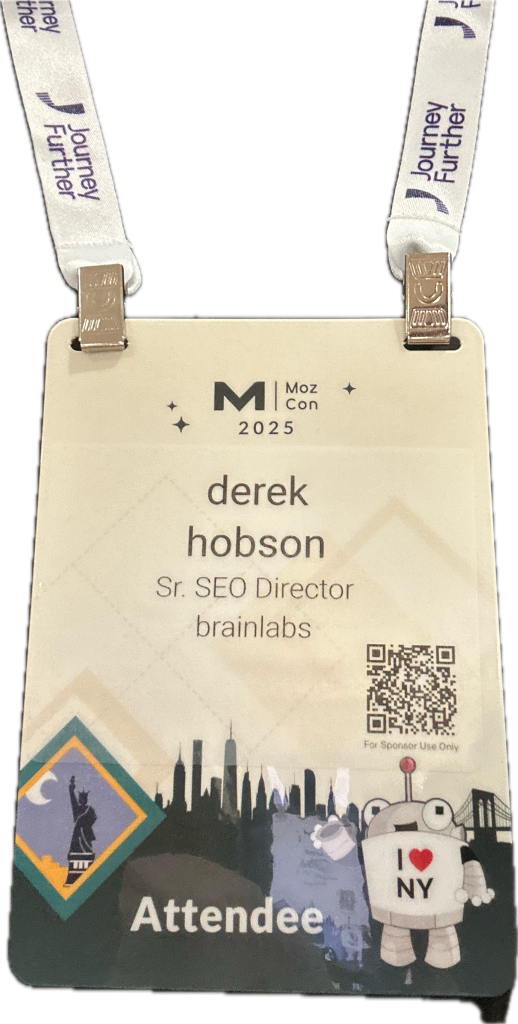
I head over to the coffee machine. I watch the woman in front of me order a flat white. I make a note to look up what a flat white is later — I will forget. I’m reminded of the woman in the coffee shop where I ordered my two mochas. She ordered a latte “extra hot.” As a former barista, “extra hot” didn’t mean anything to my calibrated machine, but to my SEO (search intent) self, it meant, “the last time I came here, my coffee was not hot enough.”
I try to order a latte and the machine says it cannot dispense while the door is open. The warning lingers long enough for me to examine the beans in the hopper and the small door (properly closed) to the left of the dispenser. I assume Latte was too complicated and perhaps the lady before me knew something I didn’t. I order a flat white and the machine’s warning appears again. This time, it asks me to login. I move on to the thermal coffee servers; snag a mug; scoop some ice in and sip while Roger saunters into view. Roger has two modes of operation: hugs and destroy. Fortunately, Roger was in a hugging mood.

I circle the premises, the pillars are wrapped in MozCon memorabilia. I recognize brands and sponsors. There’s an impressive display of bagels, eggs, and grapefruit lemonade juice. I’d partake were I not predisposed to “morning sickness” — an insensitive term, my wife coined as, whenever I wake up too early, without fail, I vomit. Mercifully, today was a few gags, though it left my throat feeling like a collapsible cat tunnel toy after a FRAP.
(look up “cat frap” on your own time).
I head to the restroom to wash my hands. If COVID taught me anything, it’s that I’d been washing my hands wrong for 30 years — given it takes two renditions of the ABCs under constant running water, I take in the amenities. Individual paper cups for mouthwash, mint-flavored floss, hand (and body?) soap.
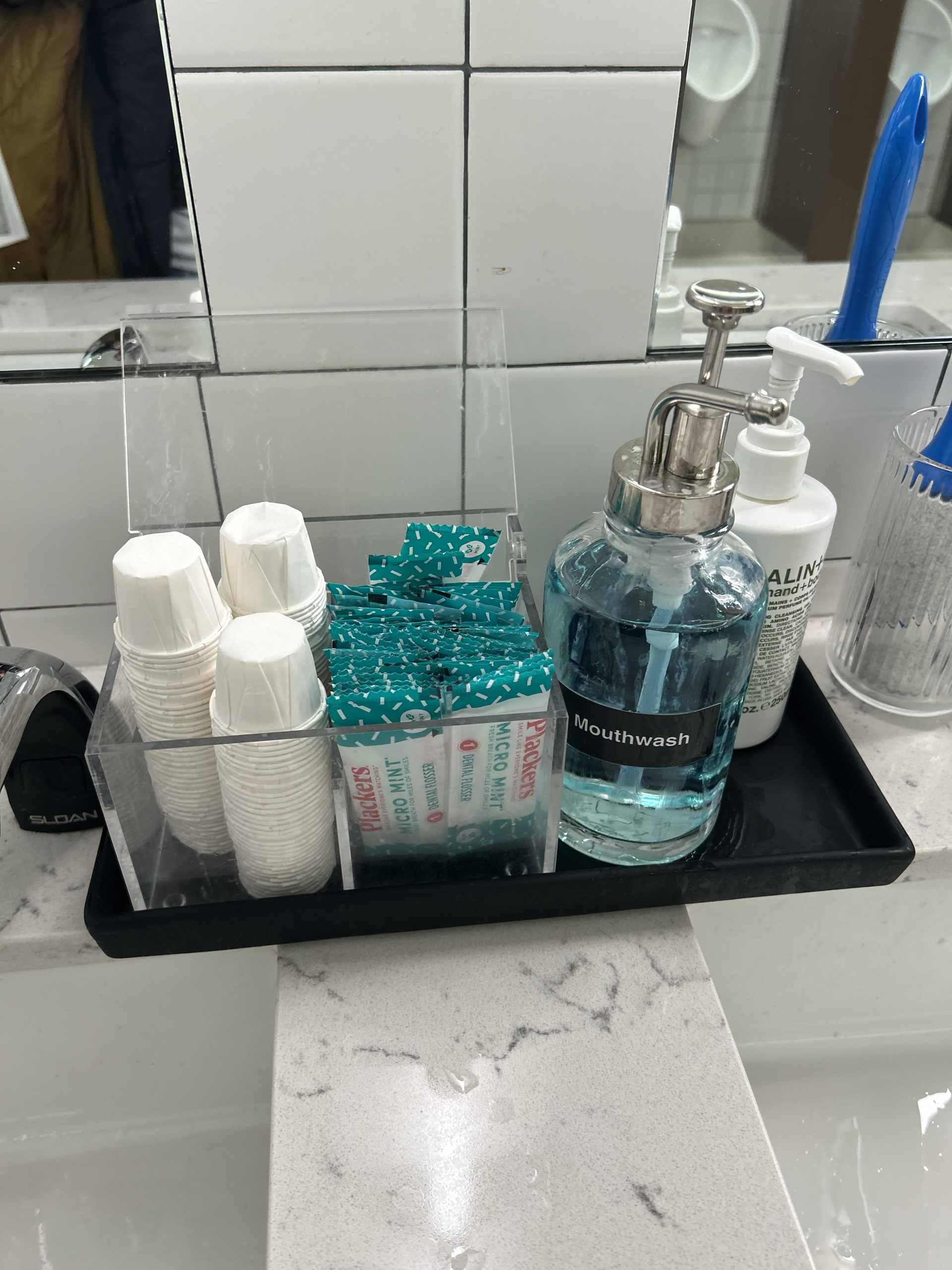
The place oozes regality. My boss texts me where I am. Being a marketer, I know “the bathroom” would be the honest answer, but result in unnecessary conjecture, so I pivot: “I’m here, where are you?”
We meet at the coffee stand and exchange pleasantries. I take note, the espresso machine appears to be working. We chat with Paul Norris about the Journey Further representation and how the brand is prominently featured on everyone’s lanyard. It’s 9am and people are starting to gather, we bid farewell and head inside.
OPENING
Willow Mack steps out and mentions how they’ve seen Moz change and shift from number of days and locales. There’s increased excitement about taking this on the road, eager to continue the momentum and see the creativity. She passes the mic to Melissa Rae Brown who serves as emcee for the stacked lineup of marketers. First up, Lily Ray.
GEO, AEO, LLMO: Separating Fact from Fiction & How to Win AI Search
Lily Ray: Vice President, SEO Strategy & Research at Amsive

Lily Ray takes the stage and effectively sets the tone for the day: this is not the “bright shiny object” for you to be lectured, this is an intervention. Her thesis is SEOs ruined the internet. But she cushions the blow with a children’s fairy tale.
She paints the SEO Community as a swamp living beneath the city of real people. Within said swamp, there’s a family of alligators: Papa PPC, Mama SEO and host of gator kids who all had their time in the sun, from Mobile-geddon >> Voice Search >> AMP >> Featured Snippets >> CWV. But there’s a golden egg that hatches a golden gator who represents the AI era.
The combination of the narrative device alongside MozCon’s “one track” — as opposed to Brighton’s Choose-Your-Own-Adventure format — made the presentation feel more intimate.

It was effective, because when Lily Ray starts pulling in Danny Sullivan & John Mueller quotes, she breaks away from the narrative structure and I was genuinely bummed — especially since Mueller would effortlessly translate to a wise turtle in the swamp.
And while I didn’t ask, I assume the storybook was AI-generated and it was no less impressive. retaining the art style exceptionally well. An art style that feels familiar enough while looking unique. Like a cross between Traveling to Tondo & Where the Wild Things Are. And I thought, “why don’t I make decks like this for clients?”
Ray goes on to foreshadow the future of the industry wherein the AI gator’s golden scales flake off and the hype momentum dies and what you’re left with is another child in Mama SEO’s litter; a young pup with plenty of use, but certainly not the only child… and until Papa PPC gets a vasectomy, certainly not the last child.
It was an excellent opener. I especially loved when Ray openly asked, “why would you call it AEO? Isn’t everything we do, answering queries?” Finally some sanity, like when other AI herpetologists would say “…instead of Keyword first, you need Topical relevance…” — which has been true for a decade.
MAIN TAKEAWAYS:
- If you want to rank in AI, think of it as EEAT evolved.
- Name it what you want, it’s yet another SEO link in the chain — and there will be more.
- Use Sora, Whisk, MidJourney — whatever — and make your decks spiffier.
STRAY OBSERVATIONS:
- It took an astonishingly long time before I started to suspect AI for these slides.
- Lily Ray should make a children’s book.
- I’m now actively considering making one for every complicated question I get from my 9yo.
How to Triple Organic Growth With a Multi-Platform Strategy
Paul Norris: Organic Growth Director at Journey Further

Paul Norris takes the stage and claims he won’t share swamp-like allegories. Though he says this and within the first 2 minutes mentions how Google is sending less traffic to websites and this is a “frog that’s been boiling for awhile” — seize it, my man.
It was during this moment when the third babysitter responded positively, and I was able to arrange childcare.

Continuing with the intervention, Norris challenges the concept of the funnel. Says it’s not linear, nor platform specific. By this point, if you’re an SEO, you’ve probably seen at least one LinkedIn post that mentions, “SEO ain’t about the ten blue links” and — in a far less crass way — Norris says, “No shit, it hasn’t been about ten blue links in ever.”
Norris goes on to talk about video in particular. How short-form and — CRITICALLY — unoptimized videos are “fast food for feeds; they’re fleeting.” I swear the alliteration comes naturally to him. Meanwhile, “long-form videos are slow, but immortal.”
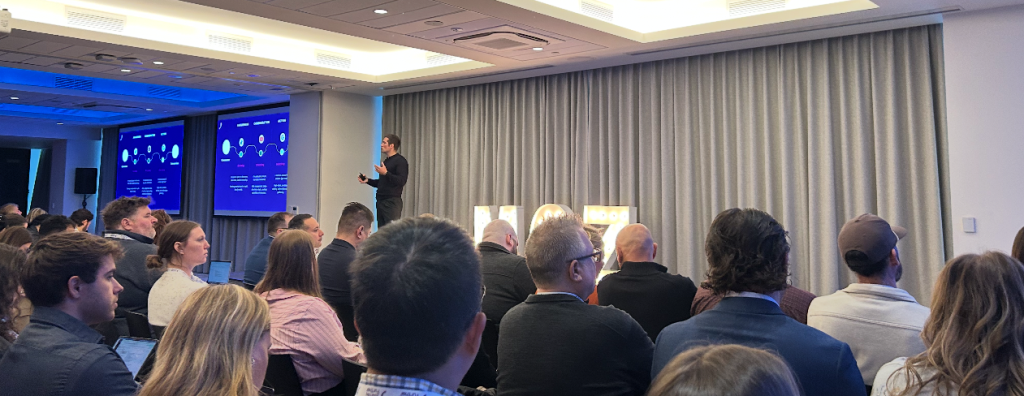
This reminds me of something Heather Green (Influencer team at Brainlabs) talks about OPENLY with teammates and clients. “We tell them not to anticipate a million views over night, but that’s why we keep a pulse on all our content and continue to check-in on it” — which, I cannot reiterate often enough, is the ONLY way “reporting” makes sense.
Returning to the funnel, Norris, expands on where video fits. Foremost, “how to” queries are essential to tie to videos. And even then, the platforms are more specific than people may realize. A memorable bit is when he equates Platforms to their Intention to their Action:
- TikTok | Awareness | Scrolling
- Ex: I’m bored and open to discovery
- YouTube | Consideration | Streaming
- Ex: I’m dedicating time to learn/be entertained
- Google | Action | Searching
- Ex: I need an answer now
— when downvotes existed (publicly) on YouTube, I created a series of “how to” videos that’d start as real as any other… then descend into nonsense. i.e. if you were trying to repair your Xbox, you may’ve found old articles that’d discuss unscrewing the back, taking two pennies, wrapping them in electrical tape, and gluing them to specific points. I can’t verify if that works, but since that was ridiculous, my addendum was you actually need to use nickels and coat them in Cool Whip before reassembling your Xbox. My assumption was people would watch a “how-to” video first, thereby recognizing the joke, having a laugh and moving on. I was wrong. Most watched them in tandem with their repair. The view time was excellent… but the comments ranged from, “It’s still not working,” to “GRAWLIX GRAWLIX GRAWLIX YOU GRAWLIX.” I digress —
Perhaps most interestingly, Norris talks about how authenticity isn’t simply a “sentiment” but felt and factored into the algorithm. Polished marketing content — videos with production value — tend to get glossed over in TikTok, but things that are rougher, filmed portrait (not landscape), tend to have better visibility. Says a video that’s existed for 5 years and recently been chopped up and plopped on TikTok is unlikely to perform well.

MAIN TAKEAWAYS:
- Customer journeys are not linear like the sales funnel of yore; moreover, platforms are not linear.
- They’ve tested different modes of video and authenticity performs far better than scripted/staged marketing-centric videos.
STRAY OBSERVATIONS:
- This talk introduced another undercurrent theme: free tools.
- Paul Norris did a CTR study uses Advanced Web Rankings CTR metrics. This is freely available.
- He also mentioned Weavy (maybe weavy.ai), I did not write this down right, but there’s a free tool that enables you to nigh instantly publish in multiple formats.
- Toward the end, the silent babysitter replied they could watch my daughter from 2-4pm which was a welcome surprise.
The Infinite Tail: Keyword Research for AI
Dr. Pete Meyers: Principal Innovation Architect at Moz
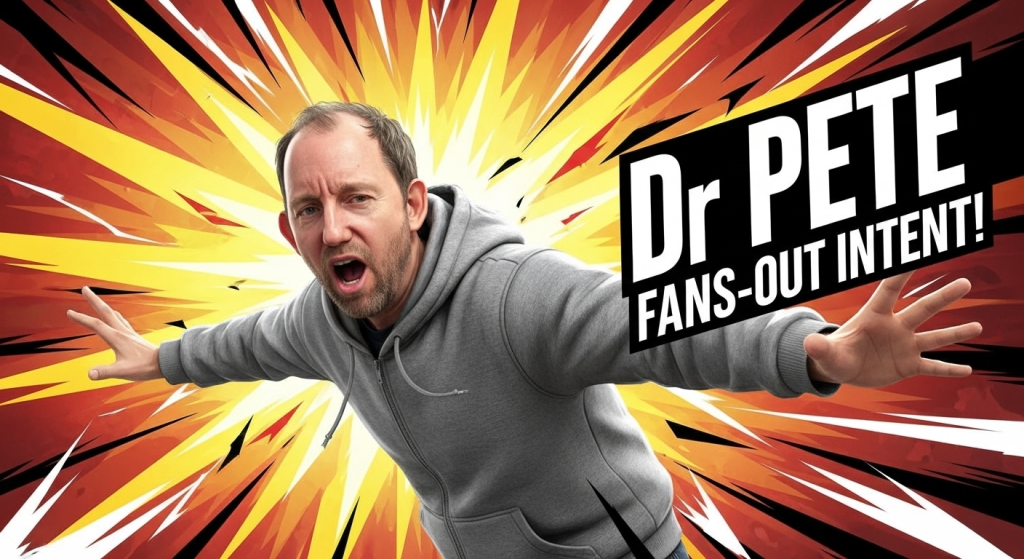
Dr. Pete Meyers takes the stage to talk through the Infinite Tail, but — and much appreciated from this steward — he talks about the Hummingbird update (from 2013). In my career, this was the first time, “user intent & user engagement” became inseparable from the SEO wheelhouse. This kicked off when the Venn between SEO and UX began — at least how to think about SEO, and that’s what Dr. Pete’s presentation shows.
Dr. Pete talks about the rise of new searches that have never been searched before — and that this has always been true. Even simply how “we” search changes with many people searching exclusively searching on platforms like TikTok rather than Google.

Anyhow Dr. Pete takes us on an analysis of Google’s fan-out queries since Robby Stein’s quote is sufficiently cryptic. Through experimentation and analysis Dr. Pete suggests 10 types of queries to anticipate what “mindset” or “stage” a user is in:
- Semantic
- Ex: Newest / Latest iPhone
- Entity
- Ex: iPhone Pro vs Pro Max
- Follow-up
- Anticipate
- Ex: What type of case will I need?
- Attribute
- Ex: What’s the battery life / How many cameras?
- Factual
- Ex: How long does it take to charge?
- Tutorial
- Ex: How do I back up my old iPhone? How do I transfer my data over?
- Perspective
- Ex: What are the user reviews? Why are users skipping this iPhone?
- Comparison
- Transaction
- Ex: Where can I buy it? Should I wait for a discount?
The strength of this talk was dispelling yet another myth. These intent buckets that SEOs use: informational, consideration, transactional, etc. In many respects are far too limiting for the type of query users have. Someone making an “anticipation” query (searching for a phone case for the new model) is in a considerably different frame of mind than someone looking for “perspective” or user reviews — and they’re likely going to different platforms to get this information.
Frankly, although he didn’t say it outright, I can see how “factual” & “attribute” could be especially relevant to the automotive industry. I could see “factual” being: How many people can this new car seat? vs “attribute”: How many children’s car seats can fit in this new car? and then if we want to get real nuanced, “perspective” on the same vibe could be: How many people can fit comfortably in this new car?
MAIN TAKEAWAYS:
- Cut the 4 buckets (go/know/do/buy); consider the 10 above
STRAY OBSERVATIONS:
- I enjoyed all 3 talks, but Dr. Pete seems at home on stage. There’s a magnetic energy that set him apart.
Break for Coffee
The bagels had left before we had a chance to say “goodbye,” though their replacement stirred the “crunchy granola” part of me. Carrot ginger juice, carrot hummus tart, and sunflower butter cookies (masquerading as meatballs — a disguise that’d work were it not for the name-tag and considerably less IKEA aroma).

I reconvened with my colleagues, Travis Tallent who’d be presenting in the next set and Regan Abbott. If there’s anyone more suspicious, it’s Abbott. Warm, mother of 2, model citizen — all an act — a thin, veneer beneath which belies a ruthless, calculating, cold-blooded killer. I’ll spare the gory details, but after 3 hours of subterfuge, she murdered a friend and confidant.

Believer of friends close, enemies closer, I ask about her travel arrangements and she reveals that she’s arranged for special seating in the front. Curious, I ask how she achieved this. I won’t risk becoming Abbott’s next target, so I shan’t repeat it here, but it was absolutely diabolical.
As Seth Godin would say (paraphrased):
You can work with the system, or change the system… or use the momentum of the system to change the system.
To avoid suspicion, I volunteered to be an accomplice and took our seats at the front.
Why Every Team Needs a Content Engineer, and How To Become One
Josh Spilker: Content Marketing & SEO Lead at AirOps
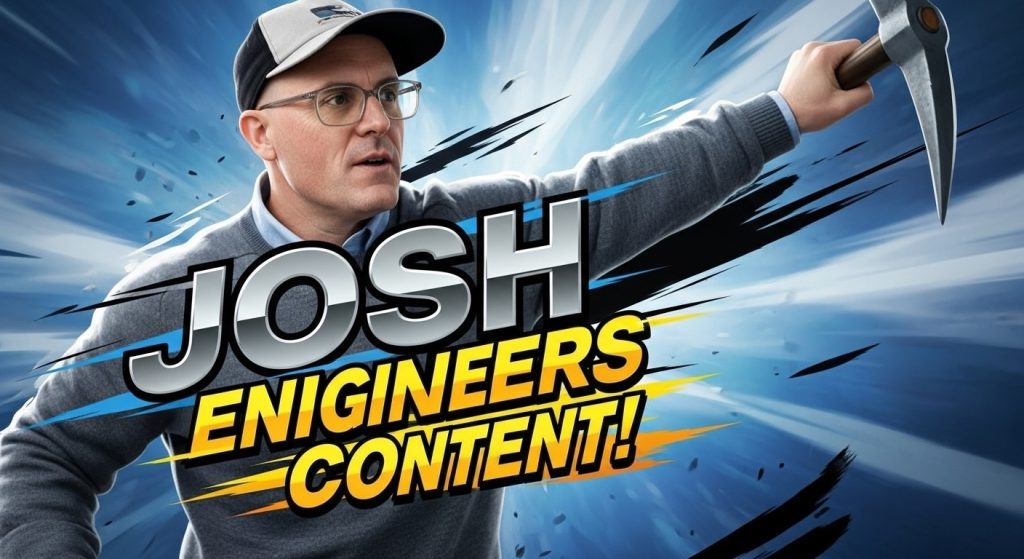
Rather than hire an AI Strategist/Specialist, Spilker’s thesis is hire a content engineer and he provides the workflow and process to implement.
Effectively, the smallest size you’d employ is:
- Context Librarian = Ideas
- A sort of project manager, comms, and brand voice encyclopedia on your team. They should have be up-to-date on everything the site/client has going on.
- Strategist = Outcomes
- Works on experimentation & performance
- Focused on What’s Next
- Content Engineer = Process
- Someone to build the workflow / how it will be done

While Spilker makes a compelling case for team structure, the greatest thing I heard him say was to “position your team as thought leaders, innovators, rather than tech support.” This. Hit. Hard. And it was echoed in who was present and who showed up. Spilker started the trend, calling out teammates and collaborators in the audience, Wil Reynolds continues the trend and Sam Torres as well. It’s a collaborative, iterative effort.
MAIN TAKEAWAYS:
- Position your team as thought leaders.
- AirOps has a lot of free working sessions(?!)
STRAY OBSERVATIONS:
- I enjoyed all 3 talks, but Dr. Pete seems at home on stage. There’s a magnetic energy that set him apart.
Algorithms Can’t Save You: How to Future-Proof Your Content Beyond AI and LLMs
Wil Reynolds: CEO / VP Innovation at Seer Interactive
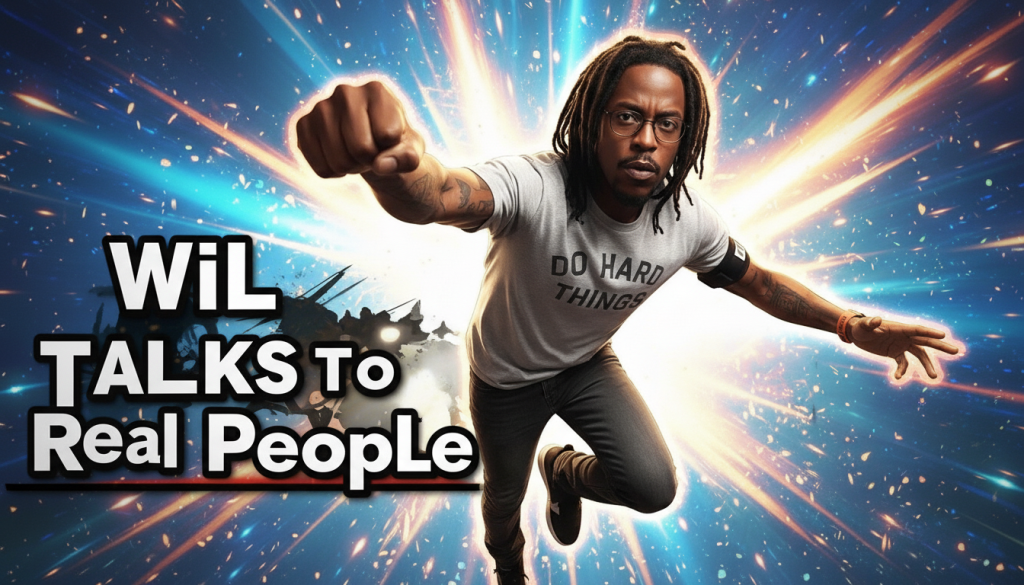
One of Reynold’s main points is AI assistants — and the information they provide — suck. He bemoaned competitors — who shall not be named here (out of respect) — rank in the top position in multiple “lists” and AI assistant prompts. It’s frustrating, but does it mean anything?
This is what prompts Wil Reynolds thesis: to be chosen, you must be believed; to be believed, you must be seen. SEO is great at getting people seen — AI is great at getting people seen — but what about believed? Rather than philosophize or rely on third-party tools to provide intel on what being “believed” means, Reynolds goes to the source; he asks people. He talks to people. This is a basic tenant and yet, I’ve worked at 6 different agencies among 200 colleagues and this was never a consideration.

Reynolds talks to people, customers, converters. Rather than see a landing page with high CTR and high CVR and make an inference — pretty much the SEO standard — Reynolds takes it to the next level and asks.
Yet again, I’m reminded of one of Jon Stewart’s biggest grievances with getting politicians on the show. Of course the politicians themselves would immediately reject outreach, so Stewart and his team targeted their aides. Their aides would be open to getting their representative on the show, trying to get their politicians on the daily show to have a “successful” appearance.
Your boss could come on the show and tell me what they think and what I’ll do is I’ll say what I think about what they said and then we’ll talk about that.
–Jon Stewart (time-stamped for reference)
Jon (pretending to be aide): So the strategy is authenticity.
Jon (being Jon): No, I’m not telling you a strategy, I’m saying ‘just f***ing talk like a person.’ That’s it!
This is something I see a startling amount of. I see talented people, solid communicators, who for whatever reason, are afraid to talk to their clients like people. They’re timid, like they live in a dictatorship and if they don’t rehearse all their answers and please the client, they’ll be taken out back and executed. It’s why I think decks should be structured more akin to things like Lily Ray’s. The deck should be a tool to have a conversation, not serve as a script you perform for them (though I understand QBRs that need to be passed up the chain of command to showcase value, but with your main point of contact, why isn’t the relationship more conversational?). Instead of talking about what we think conversational queries are… simply have a conversation with the users! And in that spirit, instead of presenting a “deck” like it’s SEO-copy on a page (i.e. sit there and listen to my wall of text), talk and engage like they’re a human being.
Now of course, Reynolds presents more than theory, he shows how to take advantage of LLMs — with a tactic I will not disclose as I was assured by Reynolds I would be publicly condemned — but he emphasizes that these “tricks” do not get you believed or chosen by your audience. There’s a value in gaming LLMs to be seen, but being believed and chosen means practicing what you preach.
He goes on to give an example of how AI is negatively affecting his company by presenting a deeply out-of-context — and “AI objective” — negative review. ChatGPT, being probabilistic and not one for context, alleges multiple users had a complaint, but it was from one user (a former client who was fired from over a decade ago). How do you combat that? When ChatGPT gives precedence to the obscure?
Reynolds says ChatGPT is not a medium by which you’re believed — especially with hallucinations and enough people wary of AI — but that’s not really the point. He goes on to show how he gets feedback from clients and prospective clients. He scrapes LinkedIn posts, sees who engages with his content and gets a sense of what they liked, what they commented, when they commented and what industry they work in. He uses that to reach out to people in a legitimately personal way. That takes time and effort and it yields results.
MAIN TAKEAWAYS:
- Getting “seen” is easy, being “believed” is hard — and that is your (SEO’s) job in the era of AI.
- Talk to people. Can’t talk to people? Talk to the customer service team. Can’t talk to them? Read user reviews; read reddit threads.
- And be mindful of what you (yourself) share on WhatsApp, iMessage, Threads, etc –> what triggers you to share content? What triggers you to comment?
STRAY OBSERVATIONS:
- Wil Reynolds is also raising money for Philadelphia’s youth; feel free to donate.
- Reynolds has a commanding stage presence and his enthusiasm is so apparent. While no one in the audience was combative, the audience did NOT match his energy or enthusiasm in the first 10 minutes, but that didn’t make him waver or stop. His moxie became irresistible. His first “f bomb” — you could hear a pin plink on tile — but by his fourth, the audience was actively laughing.
- This is the kind of narrative stuff I geek out over since so much of Reynolds talk was around being believed and ignoring the bad stuff (be it in AI, bad reviews, or from complete unknown SEOs claiming to be more reputable than Rand Fishkin). Reynolds didn’t stop just because the audience didn’t immediately pick up his vibe, he kept going because that’s who he is and he believes in what he’s doing.
Lunch Break
Lunch was a blur. By this point, I’d already succumbed to the fumes of opulence. The meal was seemingly scentless or the ventilation was working as intended. Even with a room doubling as the cafeteria, the only smell was of dignified insights and networking. Ordinarily, I’d question such things, but the beef strip and salad shut me up.
Following the meal, Travis commented about the photo booth, and Abbott jumped on the opportunity. I found it deeply suspicious Abbott needed photo evidence of where she was this afternoon. I wondered if I’d find a chalk outline at Grand Central. We didn’t know it took 3 photos. After the obligatory smile photo, Abbott immediately suggested a “Charlie’s Angels” style — no doubt pantomiming her weapon of choice.
Following this ordeal, I found the Moz booth wherein Roger was a complimentary souvenir. Immediately, I informed Abbott lest she go home empty-handed. She was one-step ahead. I remind her of my daughter — hoping to curtail any killer instinct she may have.
My daughter is going to adore Roger as much as she adores her fatjoe plushie (as much as she adores saying, “Fat Joe,” and continuing to ask me if the head is meant to be ears or horns).
Concerned for my safety, I saw LinkBuilding HQ must’ve got the memo as they attended the Women in Tech (WIT) conference where Abbott previously presented. To my delight, they’d hired a police sketch artist and I took the time to have my portrait drawn — I figured if I went missing, someone would know my face.
How To Diversify Your Traffic Outside of Google SERPS
Misty Larkins: Director of Public Relations and Internal Communications at University of Missouri Health Care

Misty kicks off with Pooky — which is near and dear to my heart. Using their rechargeables as an example of how they mitigated the issue of installation (in the UK).
In the UK, you need to hire an electrician to install wired lighting. So even though Pooky has all the material for installation written, they’re unable to share it (in the UK). We saw this as being a huge opportunity in the US since the US practically promotes DIY electrocution. Super sidebar, but there’s a shocking amount of differences in vernacular in UK vs US, to say nothing of “cream-color”, but I digress because when will I ever have an opportunity to share it?


Anyway! What Larkins is referring to I had no hand in, but I adore the brand and the work I got to do with them.
Larkins show show Pooky managed to use a multi-platform approach to get visibility on these rechargeables. She also talks about how branded search demand is a KPI to track in the AI era — which makes a ton of sense since you don’t need a “backlink” when you do outreach since AI can aggregate and synthesize.
She goes on to talk about proactive vs reactive PR. Proactive PR being things like original research, surveys, trends analysis and case studies — use your proprietary data to provide a unique POV. Reactive PR or “newsjacking” — this was a first for me hearing this term — is speed + relevance = coverage. She then goes into my favorite example which is Taylor Swift.
While promoting her new album, Taylor Swift was on a podcast where she revealed her father failed a stress test and underwent quintuple bypass surgery. Larkins talks about how that is a golden opportunity to create content in the medical field.
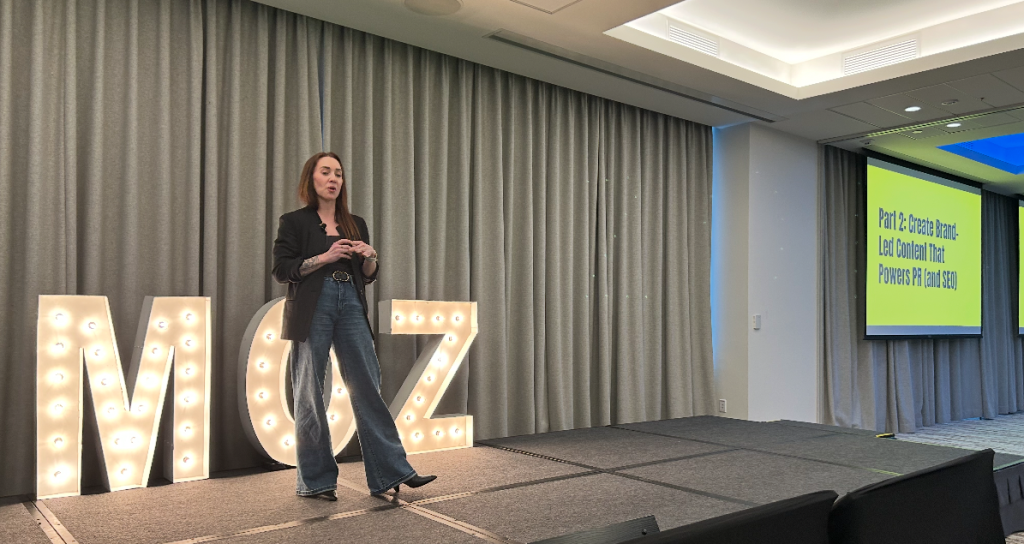
And I know what you’re thinking, wouldn’t that be akin to spinning content? What Cardi B’s latest single can teach you about Email Marketing? or Portent’s Content Generator:
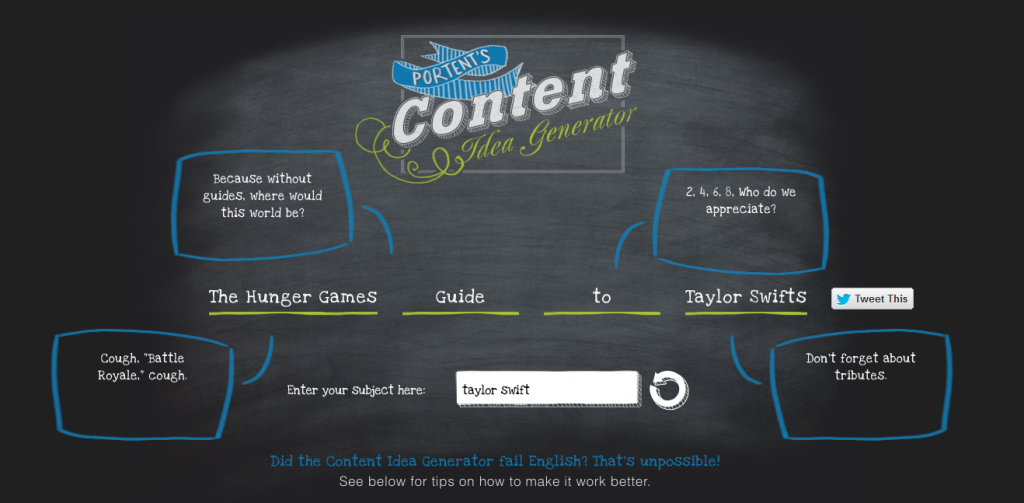
But no, Larkins goes on to suggest you select an SME to do a deep dive QA or interview (e.g. talk to people) into what a Stress Test is, what it signifies to cardiologists and PCPs. The content is not manufactured to take advantage of a trend, it’s to capitalize on conversational (fan-out) queries — i.e. what is the next thing people are asking about? It’s a way to capitalize on a moment. In the medical field, stress tests may as well be a product and Taylor Swift just drove up search demand. You’re not capitalizing on misfortune or emotion; you’re capitalizing on demand. This is how you go viral and build authority.
Because your content is only as good as its maximum reach — I believe that’s a Misty Larkins original quote, but not 100%.
And what this makes me think about is how often nowadays, I’ll listen to a podcast and one of the hosts off-handedly mentions a movie, article, TV show, etc. And often times, that’s enough to get me to go check it out. I was listening to a communication podcast prior to Halloween and in their small talk at the top of the episode, one mentioned Stephen King’s version of The Shining (to be clear, not the book, not the movie with Jack Nicholson, Stephen King’s Movie/TV version from 1997). I had no idea this existed so of course, I went and watched it. If you think about the music industry, this isn’t altogether different, I mean I discovered Deep Blue Something from the movie Baseketball. And I’d be shocked if Netflix’s Nobody Wants This didn’t put CHVRCH H!TS on every music enthusiasts’ radar.
MAIN TAKEAWAYS:
- Everything is relevant and building a content strategy means being dialed in to current events, celebrities, and pop culture.
- In hindsight, there’s a reason those “Doctor Reacts to Friday the 13th wounds” perform well.
- Bucket time for proactive DPR and reactive DPR.
STRAY OBSERVATIONS:
- Again, another example of an applicable of an applicable case study without needing to provide “raw data.” Larkins showed how Pooky’s rechargeables took off despite not working on the account herself, she showed it with trend data and keyword rankings and other third-party tools. You don’t need to breach an NDA to draw legitimate insights. You just need have a curious mind and a willingness to get answers.
Stop Losing SEO Traffic: AI-powered Strategies to Detect, Fix, & Thrive
Sam Torres: Chief Digital Officer at Gray Dot Co

This presentation’s format was interesting in that, it felt like watching the director’s commentary on a movie. What I mean is, I felt like many of the slides were recycled from a pitch deck, but rather than pitch this audience, Torres focused on sharing the behind-the-scenes aspects.
For example, one of the most memorable parts was when Torres talked through forecasting in a spread, a sort of bad, moderate, good wave of outcomes to show plausible scenarios. It ensures they provide a range, rather than setting 1 distinct number + milestone and they’re often right. It’s comforting for the client, their superiors and the SEOs. I love this.
Torres also carried an extended gardening metaphor throughout the presentation (with epic visuals — even the way the line charts unspool was deeply satisfying). Something that I wish more agencies did. It’s literal EEAT; it’s here’s my background, here’s what makes my approach unique, rather than stock marketing copy about what you’re going to get.
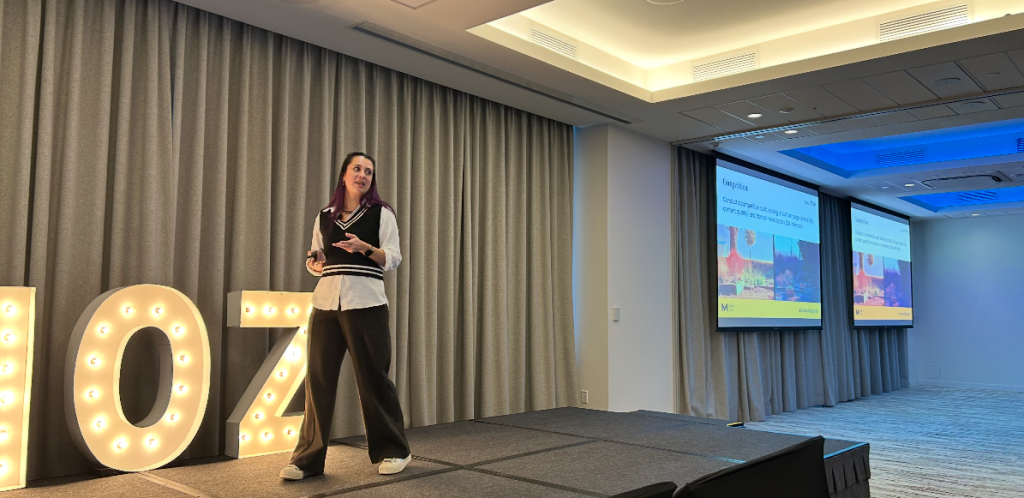
The other biggest takeaway from Torres was the volume of free tools available. The underutilized Google Trends, SurveyMonkey’s free plan, a Guardian Chrome plugin — my note-taking was not on point for this — and, most notably, SEOgets.
Do not sleep on SEOgets. If Search Console represents the era of America steeped in beer, SEOGets is Search Console when they discovered coffee.
MAIN TAKEAWAYS:
- Forecast in a spread and you’ll likely never be off your mark.
- There are loads of free tools to use, which feels especially relevant given the array of reddit threads — and even a recent Ahrefs AMA where users continue to complain over cost.
STRAY OBSERVATIONS:
- Loved the Women in Tech tattoo, it reminds me of the myth of the Chipotle napkin tattoo — that allegedly you’d get free Chipotle. To Torres point, she was told she’d never have to pay for WIT admission again, and was bamboozled into volunteering every year.
How We Increased Search Visibility by 400% for an Enterprise Site
Travis Tallent: VP, SEO at Brainlabs

Travis Tallent takes the stage and keeps the EEAT going, he doesn’t introduce himself by years of experience or title, but by providing his unique experience as the backdrop to his analogy. Tallent’s husband works in the medical field and every single person in that hospital document everything, from something as minute as a drawer containing a box of Kleenex.
Tallent’s medical analogy continues into how he and his team breakdown enterprise sites, by triaging using the RICE model: reach x impact x confidence / effort. They do this to avoid what he calls, “random acts of SEO.“
An audit should serve as “here’s the flags to fix before we begin our strategy,” but it’s not a strategy or roadmap. If you structure an audit by high impact, low effort and list out everything, then someone using this as a roadmap is spending Q2 or Q3 doing low impact, high effort fixes and that spells disastrous. Tallent calls out agencies that play a strictly numbers game as well. You can pay for quarterly audits, 3 content briefs, 1 technical fix… or at a higher premium, you get bi-monthly audits, 5 content briefs, and 2 technical fixes… etc. These inflexible designs imply a “one size fits all” but this has never been the case.

Tallent goes on to showcase their consumer search journey analysis; a way to explore which categories feature the biggest opportunity and what competitors own the greatest share of those categories. This ensures that instead of trying to optimize an enterprise site en masse, the team zeroes in on one categorical opportunity at a time. It’s a way to triage and optimize with intention.
It’s also why his team chooses 90-day roadmaps. It’s a way to renew focus, take their learnings of the previous quarter and apply it to what comes next.
MAIN TAKEAWAYS:
- Utilize the RICE model to prioritize tasks.
- Do not fall victim to doing “random acts of SEO,” optimize with intention.
- Take one bite of the elephant at a time, making targeted recommendations to specific aspects of the business.
STRAY OBSERVATIONS:
- Look it’s hard to be objective from my corner when I’m alternating between the bleary, but indefatigable optimism of a Sam Seaborn and the grueling precision pessimism of a Toby Ziegler.
- I know how the sausage is made and I’m sitting through 5 hours of ideation on how to iterate on it.
Afternoon Break
No food, but restocked beverages & snack bags. I chatted with a few hosts and peers. This part’s a bit of a blur, in no small part because I wound up getting an unexpected phone call. It was the designer calling post-babysitter. All was well at home, but she had some news to share about her burgeoning business. This was cause for celebration, but a distance of ~53 miles meant it’d have to wait.
The conversation ran long enough for me to see me booth owners start to breakdown their shops & wares. The space was shedding its MozCon skin while an open bar started to take shape. I checked the time and realized I’d missed the next speaker. I reminded the designer I’d be home around 8:30pm and she could see where I am in the Find My app since my location is always sharing. A fact, I reminded myself, I should likely tell Abbott lest she still thinks I’ll be her next victim.
The New Playbook You Need for Content Success Post AI
Chima Mmeje: Senior Content Marketing Manager at Moz
I missed this one 😭, you will likely need a recap elsewhere or on LinkedIn.
F*** Traffic: How To Prioritize Conversion Over Vanity Metrics
Bianca Anderson: Manager of Organic Growth at hims and hers

For years, SEOs focused on traffic as their core metric — look no further than the Google Search Console crocodile — and Anderson posits traffic should never have been the center of an SEO’s universe; that we’re in a Copernican-like shift wherein instead of the sun (traffic) being the center of the universe: revenue, conversions, high-impact pages are what’s needed now.
To act on this, Anderson provides a heavy-hitter framework. The goal being to find where you can optimize, where you can prune or consolidate, and where you can scale. To best determine this, she recommends grouping these based on business impacts, i.e. high traffic might be 0.3; high conversions might be 0.7… and you normalize it…
At this point, Anderson goes on to supply some math for how to normalize this and it went well over my head. That said, the message was clear, group your pages into percentiles to determine where to allocate your time.

Something I especially liked is Anderson mentions you ought to track your top pages with every algorithm update. I like this concept a lot especially since an algo update can easily turn into a distraction if a client demands you investigate. This is something Anderson supports as much of her talk is about reframing the conversation with clients.
Plus by shifting to business impacts, it makes fluctuating rankings or traffic so much less essential. Yet again, a bit of shout-out to, use free tools.
MAIN TAKEAWAYS:
- Stop focusing on traffic, focus instead on transactions, conversions, and business impacts.
- Categorize your pages by business impact to determine whether you should optimize, refresh, or consolidate.
STRAY OBSERVATIONS:
- Anderson cleverly disguised a few naysayers in the SEO swamp as aliens… so of course, I entered the quotes into Google to find them.
Close-Out
There was an open bar. As a poor sap who was raised on moonshine, Swedish Fish tanks, and Rebel Yell, I asked the tender what he’d serve himself if he was me. He served me a glass of regret. I made small talk with a number of SEOs: one who’d optimized a site for psychics, another who’s son looked to doing something adorable, and another who attended what was either a fever dream or LavaCon.
Abbott told me some people were getting together at someone’s office. I thought that sounded awfully suspicious, but she was telling me so I didn’t feel the need to wait up at the train station for her. (Alas, she’d found a new victim.)
I chat with my boss a moment more about the uncertain future and the losses we’ve had (professional and personal). I tell him what I wish was true and what I hope isn’t; I don’t say the next part out loud, but I think of what Larkins said, “hope isn’t a strategy.” I leave for the elevator and get my dose of liminal space in Grand Central.

On the train home, I realize my phone’s at 4%. I brought a powerbank but no cable. I wonder if I’ll make it home. If I’ll make it.

